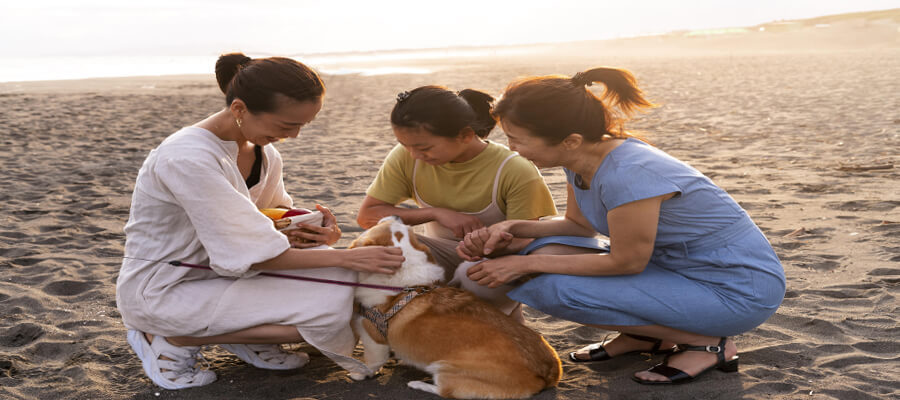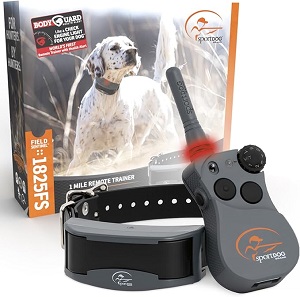
What to Know About Fostering Dogs: A Complete Guide
What to Know About Fostering Dogs: A Complete Guide
Introduction
Fostering dogs is a generous and life-changing way to make a positive impact on the lives of homeless pets. It involves opening your home to a dog temporarily, offering them a safe, loving environment until they find a permanent family. While incredibly rewarding, fostering also comes with its challenges and responsibilities. If you’ve ever considered fostering dogs, this guide will provide you with everything you need to know before taking the plunge.
1. What Is Dog Fostering
Dog fostering is a temporary arrangement where individuals or families take care of a dog until it is adopted permanently. Foster homes provide a safe, nurturing environment for dogs who may be recovering from illness, too young for adoption, or in need of socialization. Fostering also helps ease overcrowding in shelters, giving dogs a better chance to thrive.
2. Why Is Fostering Important
Essentials for Your Newly Adopted Pet
Welcoming a shelter pet into your life is a beautiful journey. Here are some handpicked items to help your new friend feel safe, loved, and right at home:
a. Alleviates Shelter Overcrowding
Shelters can become overcrowded, and fostering allows more dogs to receive the care they need. By fostering, you're opening up space for another dog to be saved.
b. Gives Dogs a Better Chance at Adoption
Some dogs may not show their true personalities in the shelter environment. A home setting allows them to shine, making them more adoptable.
c. Special Care for Dogs in Need
Dogs with medical conditions, young puppies, or those recovering from trauma often need more individual care than shelters can provide. Foster homes can offer this specialized attention.
d. Helps Socialize Dogs
Dogs in foster care can learn valuable socialization skills, making them more well-adjusted when they transition to their forever homes.
3. Responsibilities of a Foster Dog Parent
Fostering requires commitment and effort, but it's a fulfilling experience. Here are some key responsibilities:
a. Basic Care
You are responsible for feeding, exercising, and providing basic care like grooming and bathing the dog.
b. Training and Socialization
Many rescue dogs may not have received proper training or socialization. As a foster parent, you'll help them learn essential skills such as leash-walking, housebreaking, and basic commands.
c. Transportation to Vet Visits
Foster dogs will need regular vet visits, particularly if they are recovering from health issues or undergoing vaccinations and treatments. You'll be expected to take them to these appointments.
d. Communication with the Rescue or Shelter
It’s essential to stay in contact with the shelter or rescue organization. You'll provide updates about the dog’s health, behavior, and progress, and they’ll guide you through the process of finding the dog a permanent home.
e. Preparation for Adoption
As a foster parent, you play a crucial role in preparing the dog for adoption. This includes helping them adapt to a home environment and preparing them emotionally for the transition to their forever family.
4. Challenges of Fostering Dogs
While fostering is rewarding, it also comes with challenges:
a. Emotional Attachment
One of the hardest parts of fostering is saying goodbye to a dog once they are adopted. It’s natural to become emotionally attached, but fostering with the knowledge that you're part of their journey to a better life can help.
b. Behavioral Issues
Some rescue dogs may have behavioral issues like fear, anxiety, or aggression, especially if they’ve been mistreated in the past. This can require patience, dedication, and sometimes professional training.
c. Time and Energy
Fostering requires a significant time commitment. Daily walks, playtime, and potential vet appointments all add up. If the dog has special needs, you may need to devote even more time to their care.
5. Preparing Your Home for a Foster Dog
Before welcoming a foster dog into your home, it’s essential to create a safe and comfortable environment.
a. Dog-Proof Your Home
Just like bringing home a new puppy, you'll need to dog-proof your space. Remove any hazardous items such as small objects, electrical cords, or toxic plants.
b. Create a Safe Space
Set up a designated area for your foster dog where they can feel safe. Provide them with a comfortable bed, toys, and access to food and water. A crate may also be helpful, especially for dogs in need of crate training.
c. Prepare Supplies
Make sure you have all the necessary supplies on hand, including:
- Dog food (as recommended by the rescue organization)
- Bowls for food and water
- Leash, collar, and ID tags
- Toys for mental stimulation
- Grooming tools
- Crate (if needed)
6. What to Expect When You Start Fostering
a. Initial Adjustment Period
When you first bring the foster dog home, there will likely be an adjustment period. The dog may be anxious or unsure of their surroundings, so be patient and give them time to acclimate.
b. Training and Boundaries
Start working on basic training from the beginning. Setting boundaries with consistency will help the dog understand what behaviors are acceptable in a home.
c. Monitoring Health and Behavior
Keep an eye on the dog’s health and behavior. If you notice any unusual symptoms or behaviors, report them to the rescue organization or veterinarian immediately.
7. The Foster-to-Adopt Option
In some cases, fostering may lead to adoption. Many foster parents fall in love with their foster dogs and decide to make them permanent members of the family. If you're considering this, communicate with the rescue organization to see if adoption is a possibility.
8. How to Say Goodbye When It’s Time
One of the most challenging parts of fostering is saying goodbye when your foster dog gets adopted. Here are some ways to cope:
a. Focus on the Positive Impact
Remember that you’ve played a critical role in the dog’s journey to finding a loving home.
b. Stay in Touch
If the new adopters are open to it, ask to stay in touch and receive updates. Many adopters are happy to share photos and stories of how the dog is doing in their new home.
c. Welcome a New Foster
One of the best ways to move forward is by opening your home to another foster dog who needs help.
9. How to Get Involved in Fostering
If you’re interested in fostering, reach out to your local shelters or rescue organizations. Most places are always in need of foster homes. Here’s how you can start:
a. Find a Rescue Organization
Search for local animal shelters or rescues that have a foster program. Many organizations have websites where you can apply to foster.
b. Complete an Application
You’ll likely need to fill out an application and go through an interview process. This helps ensure that the rescue organization matches you with the right dog.
c. Attend Training (if offered)
Some rescue organizations offer foster training programs to help you prepare. These can be incredibly useful, especially if you’re fostering for the first time.
d. Start Fostering
Once approved, you’ll be matched with a dog that fits your home environment. From there, the journey of fostering begins!
10. The Emotional and Personal Benefits of Fostering
While fostering can be challenging, the rewards far outweigh the difficulties. You’ll experience the joy of knowing you’ve helped save a life and played a part in giving a dog a second chance. Additionally, fostering can teach valuable lessons about compassion, patience, and selflessness, and it often strengthens your bond with the dog community.
Conclusion
Fostering dogs is a unique and fulfilling experience that makes a lasting difference in the lives of animals. From preparing your home to understanding the emotional aspects of saying goodbye, this guide has covered everything you need to know to become a successful foster dog parent. By opening your home and heart, you’re not only helping a dog in need but also contributing to a more compassionate world for animals.
Affiliate Products
We may earn a small commission when you shop through our links — it helps us keep sharing love and care for every dog out there, at no extra cost to you.
Up to 75% Discount

Dog Collar with Health Monitoring
BUY NOW »
Up to 55% Discount

Luxury Faux Furhuge Napping Bed
BUY NOW »

